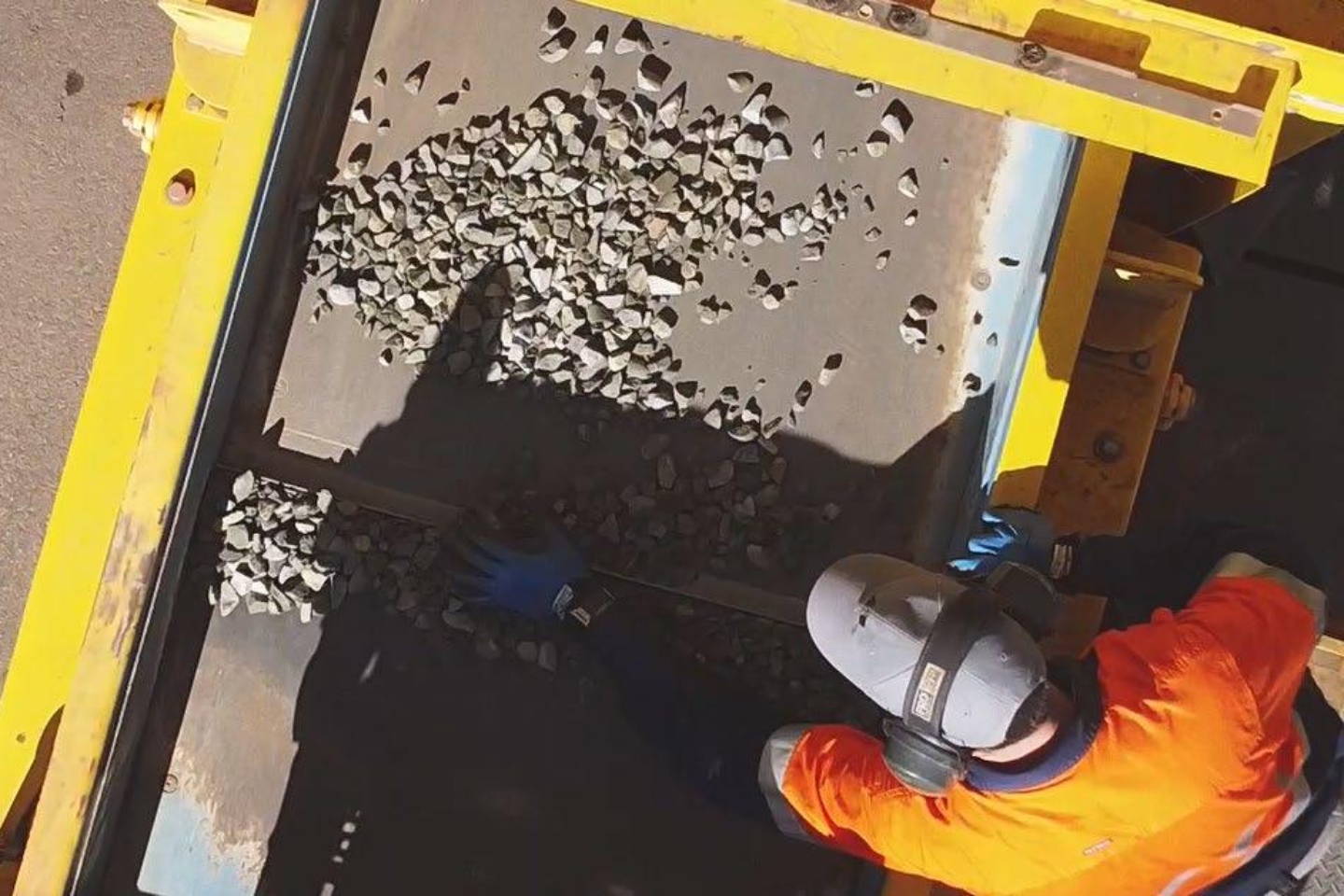American West Metals’ recent metallurgical testwork on copper-mineralised sample material from its Cyclone and Chinook deposits at its Storm project in Canada has successfully generated what it says is commercial-grade direct shipping ore. The testwork employed a two-circuit ore-sorting and inline pressure jig stream, which was shown to produce a range of direct shipping copper concentrate grades with good yields.


American West Metals’ recent metallurgical testwork on copper-mineralised sample material from its Cyclone and Chinook deposits at its Storm project in Canada has successfully generated what it says is commercial-grade direct shipping ore (DSO).
The testwork employed a two-circuit ore-sorting and inline pressure jig stream, which was shown to produce a range of direct shipping copper concentrate grades with good yields.
The DSO processing testwork for the Cyclone deposit at 1.2 to 1.5 per cent copper feed grades, delivered a concentrate in a range between 16 and 22 per cent copper – equating to between 58 and 62 per cent of copper metal to DSO. Similar modelling for Chinook, using a 1.2 to 1.5 per cent copper feed grade also produced a concentrate ranging between 16 and 22 per cent copper – equating to between 64 and 71 per cent copper metal to DSO.
The modelling gave rise to an estimated capital cost for a DSO plant cost of between US$18 and US$23 million (AU$27.3 and $AU35 million), with US$4 per tonne ($A6 per tonne) processing costs. The production modelling and cost estimates were provided within the studies completed by WA mining and resource sector consultant Nexus Bonum and do not represent scoping or feasibility studies.
American West Metals managing director David O'Neill said: “We are extremely pleased to announce a major milestone for the Storm Copper Project with spectacular results from the DSO processing study. The program has produced commercial-grade DSO products from typical copper ores through an uncomplicated and low-cost process. This is game-changing for the Storm project and world-leading in terms of copper processing innovation and performance.”
The goal of the Nexus Bonum studies was oriented towards production modelling and cost estimation the company can use for internal purposes to make strategic decisions on the Storm project. The testwork studied the upgrade performance of a range of sensor-based and gravity technologies using the metallurgical samples provided and embraced a wide range of copper grades and size fractions to determine the DSO potential across the mineral resource.
The results confirm that the Cyclone and Chinook copper mineralisation is amenable to upgrading and that high recoveries can be obtained in low-mass yields.
Among all of the tests, ore-sorting and wet-jigging (a gravity separation technique) using an inline pressure jig produced the most favourable upgrade outcomes. The dual circuit combination allowed both the coarse (above 11.2mm size) and fine (under 11.2mm size) fractions to be processed effectively and in parallel.
Management says the DSO process is capable of being configured to handle increased mining production rates and selective feed concentrate grades, meaning it could potentially accommodate feedstock from the other Storm project deposits.
The company anticipated the possible need for flexibility when incorporating feed from other deposits by instituting testwork on variably-sized potential feed material, various grind sizes and other optimisation studies on its Cyclone, Chinook and Thunder deposits. It says the process of generating DSO at Storm is a simple and low-capital cost development solution and the project now stands out as one of the few – and highest-grade – DSO copper opportunities globally.
It adds that its testwork on the proof-of-concept processing option for Storm significantly derisks the project from the aspects of development, funding and permitting, while its ongoing drilling continues to advance its exploration and resource conversion.
The Cyclone and Chinook deposits are the most advanced of the company’s seven exploration targets at its Storm project on Somerset Island in Nunavut, which features a mineral resource estimate of 17.5 million tonnes at 1.2 per cent copper and 3.4 grams per tonne silver. The bulk of the estimate is contributed to by the Cyclone deposit, which is the project’s biggest target and contains an estimated 12.1 million tonnes at 1.2 per cent copper and 3.8g/t silver.
Cyclone is the only resource that has an estimated indicated mineralisation category and it comprises 4.9 million tonnes at 1.3 per cent copper and 3.5g/t silver, with the remaining 7.2 million tonnes at 1.2 per cent copper and 4.03g/t silver residing in the inferred category.
The dominant copper mineral within the Storm deposits is chalcocite, which is hosted by coarse veins and breccias and a direct correlation has been established between the volume and thickness of the mineralised veins with their overall copper grades. The company has also identified modern ore sorting processes as a means of upgrading its mineralisation to DSO quality.
Ore-sorting is a pre-concentration technology employing advanced sensors and algorithms to separate economically-viable ore from waste rock in real time and is already in widespread use in the mining and mineral processing industry for a range of commodity types.
The big advantage of ore-sorting and beneficiation technology is that it can wholly or partly circumvent the need for a conventional flotation plant and its accompanying tailings facility, saving ground acreage, impoundment dams, potentially toxic leakage and dust hazards and the low, but constant risk of impoundment failure. The overall effect is to reduce operating costs, capex and the operational footprint.
American West’s rate of resource development at Storm has been impressive and apart from the three principal, more advanced and still-developing targets being discussed, the company still has four other defined targets to work on.
There also remains a strong likelihood of identifying additional targets through its geophysics and it can be reasonably assured that both flanks of the known host graben structure still contains other targets that are yet to be unveiled.
Is your ASX-listed company doing something interesting? Contact: matt.birney@businessnews.com.au













